Paul 300 U
Member
I'm reassembling the power steering box on my 350 after replacing a broken gear shaft. I've done this before semi successfully but the time I want to be 100% certain I'm doing it correctly.
I'm not clear on how to properly adjust the two shafts, using the adjustment screws and eccentric screws when reassembling the two halves of the steering box. The instructions in the manual aren't clear to me. The are 2 sets of assembly instructions one for manual steering and one for power steering. In the middle of the PS steering instructions you are told to go to the manual steering section in order to make adjustments. The manual box is not identical to the PS box.
I've attached pictures of the instructions and my steering box. I've tried to highlight where appropriate and numbered the pages of the instructions so you can read.
My questions:
1. I don't understand how the screws circled in blue are properly adjusted. When turned inwards they will meet with the face of the opposing gear.
2. I don't understand how the eccentric screws highlighted in green are used to aid in the assembly/adjustment. The eccentric screw I marked number 2 doesn't appear to be eccentric or a screw. To me it is a.5 inch dowel with fine thread nuts on each end. Number 1 is screw and the shaft is eccentric.
Any feedback is appreciated.
Thanks Paul
3
I'm not clear on how to properly adjust the two shafts, using the adjustment screws and eccentric screws when reassembling the two halves of the steering box. The instructions in the manual aren't clear to me. The are 2 sets of assembly instructions one for manual steering and one for power steering. In the middle of the PS steering instructions you are told to go to the manual steering section in order to make adjustments. The manual box is not identical to the PS box.
I've attached pictures of the instructions and my steering box. I've tried to highlight where appropriate and numbered the pages of the instructions so you can read.
My questions:
1. I don't understand how the screws circled in blue are properly adjusted. When turned inwards they will meet with the face of the opposing gear.
2. I don't understand how the eccentric screws highlighted in green are used to aid in the assembly/adjustment. The eccentric screw I marked number 2 doesn't appear to be eccentric or a screw. To me it is a.5 inch dowel with fine thread nuts on each end. Number 1 is screw and the shaft is eccentric.
Any feedback is appreciated.
Thanks Paul
3
Attachments
-
 IMG_20240118_102822570~2.jpg1.9 MB · Views: 21
IMG_20240118_102822570~2.jpg1.9 MB · Views: 21 -
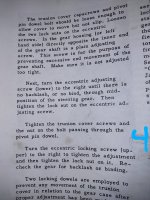 IMG_20240118_102812852~2.jpg1.9 MB · Views: 22
IMG_20240118_102812852~2.jpg1.9 MB · Views: 22 -
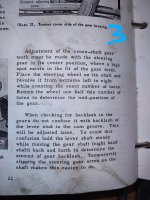 IMG_20240118_102750035~2.jpg2.4 MB · Views: 23
IMG_20240118_102750035~2.jpg2.4 MB · Views: 23 -
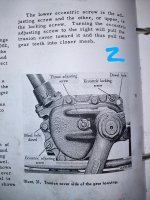 IMG_20240118_102741696~2.jpg2.9 MB · Views: 22
IMG_20240118_102741696~2.jpg2.9 MB · Views: 22 -
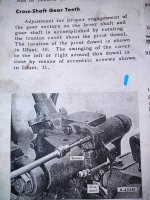 IMG_20240118_102722385~2.jpg3.4 MB · Views: 26
IMG_20240118_102722385~2.jpg3.4 MB · Views: 26 -
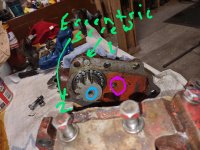 IMG_20240118_102012524~2.jpg2 MB · Views: 28
IMG_20240118_102012524~2.jpg2 MB · Views: 28 -
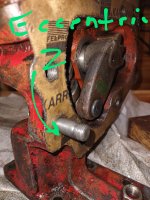 IMG_20240118_104305676~2.jpg2.5 MB · Views: 23
IMG_20240118_104305676~2.jpg2.5 MB · Views: 23 -
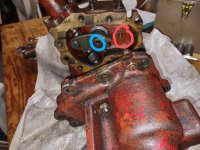 IMG_20240118_101957173~2.jpg2.4 MB · Views: 20
IMG_20240118_101957173~2.jpg2.4 MB · Views: 20 -
 IMG_20240118_102012524~2.jpg2 MB · Views: 21
IMG_20240118_102012524~2.jpg2 MB · Views: 21

